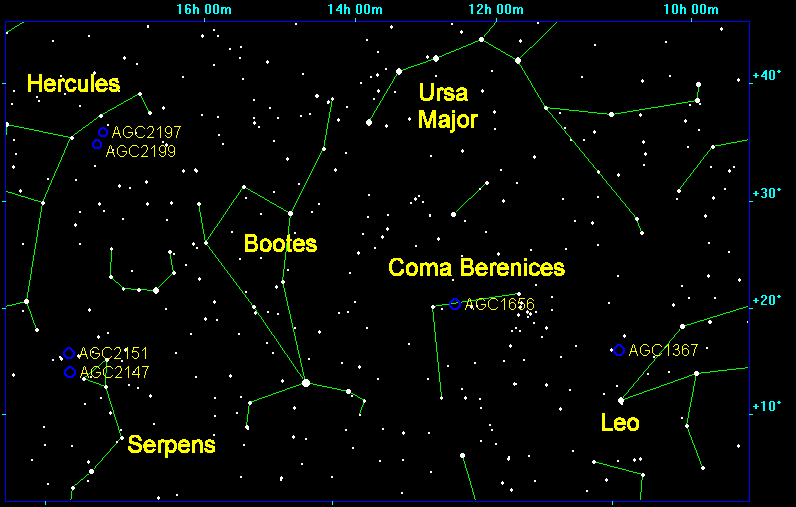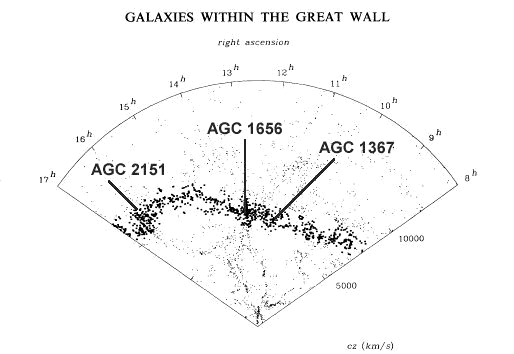The Great Wall of Galaxies

Click on the galaxy cluster for finder charts and observing notes
Sheets and Voids
For an Overview: Observing Galaxy ClustersHow It All Fits Together: Large Scale Structure

Maps of the galaxy distribution in the nearby universe reveal large coherent structures. The extent of the largest features is limited only by the size of the survey. Voids are present in every survey large enough to contain them. Many galaxies lie in thin sheet-like structures. The largest sheet detected so far is the Great Wall. The frequent occurrence of these structures is one of several serious challenges to our current understanding of the origin and evolution of the large-scale distribution of matter in the universe. - Margaret Geller & John Huchra
Geller and Huchra discovered the Great Wall on the first three sections of the CfA (Center for Astrophysics) redshift survey, which covered the region from eight to 16 hours of right ascension and from 26.5 to 42.5 degrees of (north) declination. Although the Leo and Hercules Clusters lie slightly south of this region, the authors make it clear that the same structure extends south of the survey boundaries. The wall of galaxies is skewed to our line of sight, with a mean redshift distance that varies from Z = 0.023 (~350 million light years) in Leo to Z = 0.033 (~500 million light years) in Hercules.

| OTHER | |||||||
| AGC1367 | Leo Cluster | LEO | NGC 3842 | 13.5 | .022 | 1145 | +19.8 |
| AGC 1656 | Coma Cluster | COM | NGC 4874 | 13.5 | .023 | 1300 | +28.0 |
| AGC 2147 | na | HER | IC 1165 | 13.8 | .038 | 1602 | +15.9 |
| AGC 2151 | Hercules Cluster | HER | NGC 6040 | 13.8 | .036 | 1605 | +17.8 |
| AGC 2197 | na | HER | NGC 6146 | 13.9 | .030 | 1628 | +40.9 |
| AGC 2199 | na | HER | NGC 6166 | 13.9 | .031 | 1629 | +39.5 |